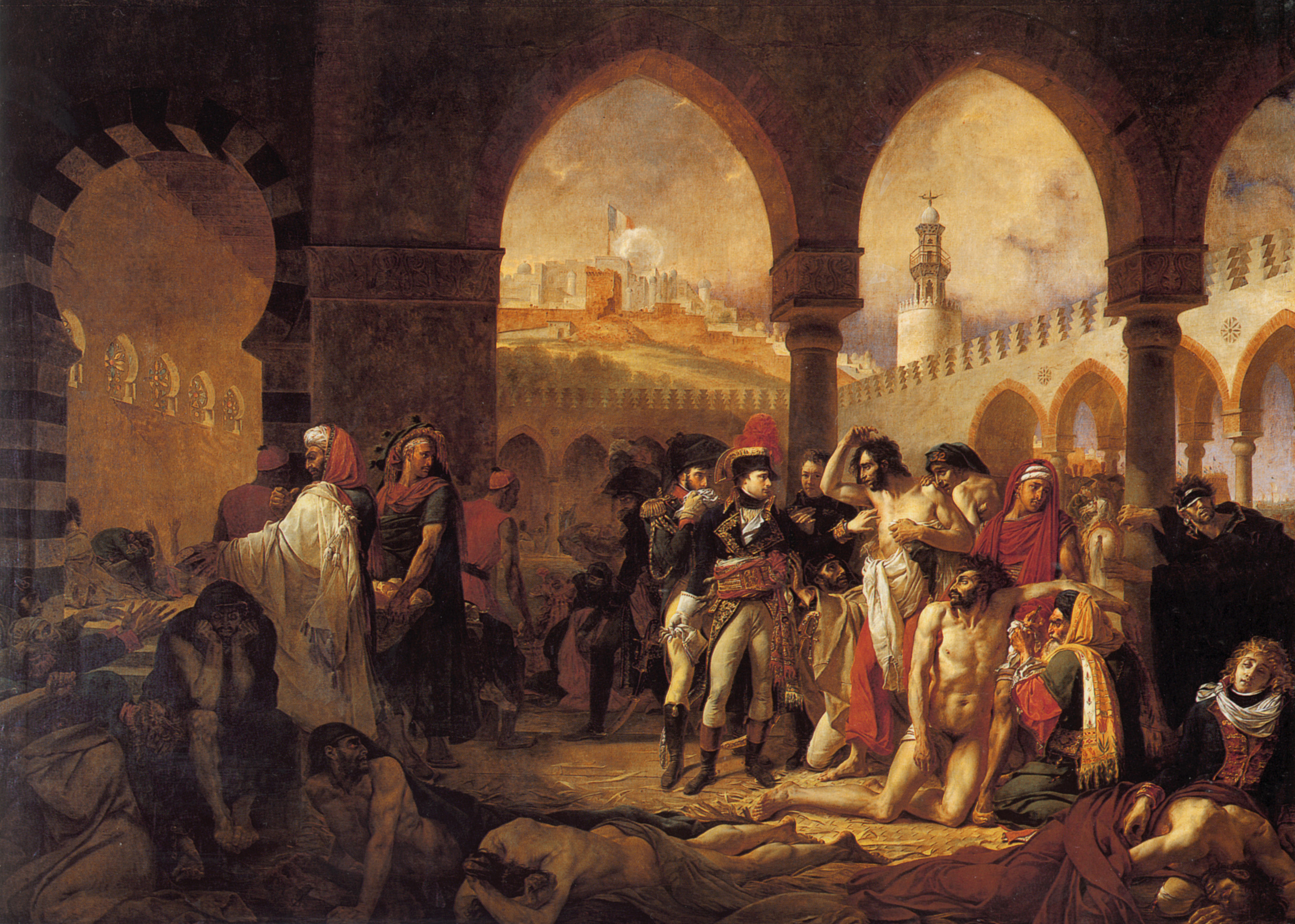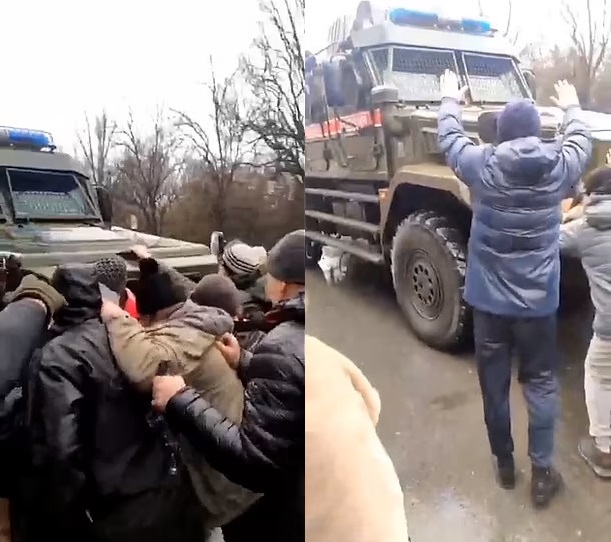
IMAGE 1
Bonaparte visitant les pestiférés de Jaffa (Bonaparte visits the plague stricken in Jaffa, oil on canvas, 1804, Louvre, by Antoine-Jean Gros) is a propaganda painting idealizing Napoleon’s disastrous Egyptian campaign. It shows his (alleged?) visit to his sick soldiers in March 1799 in his attempt to reverse the negative rumors about him ordering plague victims to be “mercy-killed” by poisoning. The outbreak of the bubonic plague had followed the violent “sack of Jaffa” by the French army. This romantic oil-painting, with several neoclassicist elements, was exhibited in the months between Napoleon’s proclamation as emperor and his coronation. It portrays the emperor as god-sent healer offering the traditional “royal touch”, as he thaumaturgically lays his hand on the armpit of one of the sick.
Clandestina, November 2015
1. war as spectacle within the bourgeois subject
The battlefield had become a mass spectacle decades before the discovery of photography. With the Napoleonic wars, the boundary between exercising lethal violence and observing it became blurred. Napoleon realized that in war, succeeding in propaganda is more important than winning a real military confrontation. Napoleon’s operations had to be celebrated as victorious, even if if they could not be won on a technical military level. They had to be described in detail and these glorious narratives of fighting battles had to be distributed as widely as possible. He was the first leader to make “live war reporting” as definitive as it still is for the subject formation of the Western citizen “in the peaceful world”.
Military operations in war had long become mass industrial affairs and could no longer be represented in their entirety by simple observers, such as painters or writers. Now that armies had technologies of mass destruction to their disposal, a whole variety of accounts, comments and descriptions, as well as knowledge of the stages of tactical and practical preparations were necessary for “a whole battle” to be recomposed in the Press for the news-hungry public.
Over the course of the 19th century, war itself started adapting to the requirements of the remote-controlled imagination of its consumers. Everyone could now have an opinion about how an operation would be best carried out, how its tactics should be interpreted, how a battle should be evaluated or repeated avoiding past failures. Soon, war had found a comfortable place in the everyday life of consumers in bourgeois States.
As a natural law of the global balance of power, real war would soon appear even banal.
This sense of a split between “peace at home” and “war abroad” (or “war elsewhere”) is expressed in most binary oppositions of meaning in the spectacular industries of the 20th century. The opposite genres of “news” and “entertainment” are emblematic of this dialectics – their merging in today’s “infotainment” carries their complementarity to its logical conclusion.
Continue reading →



